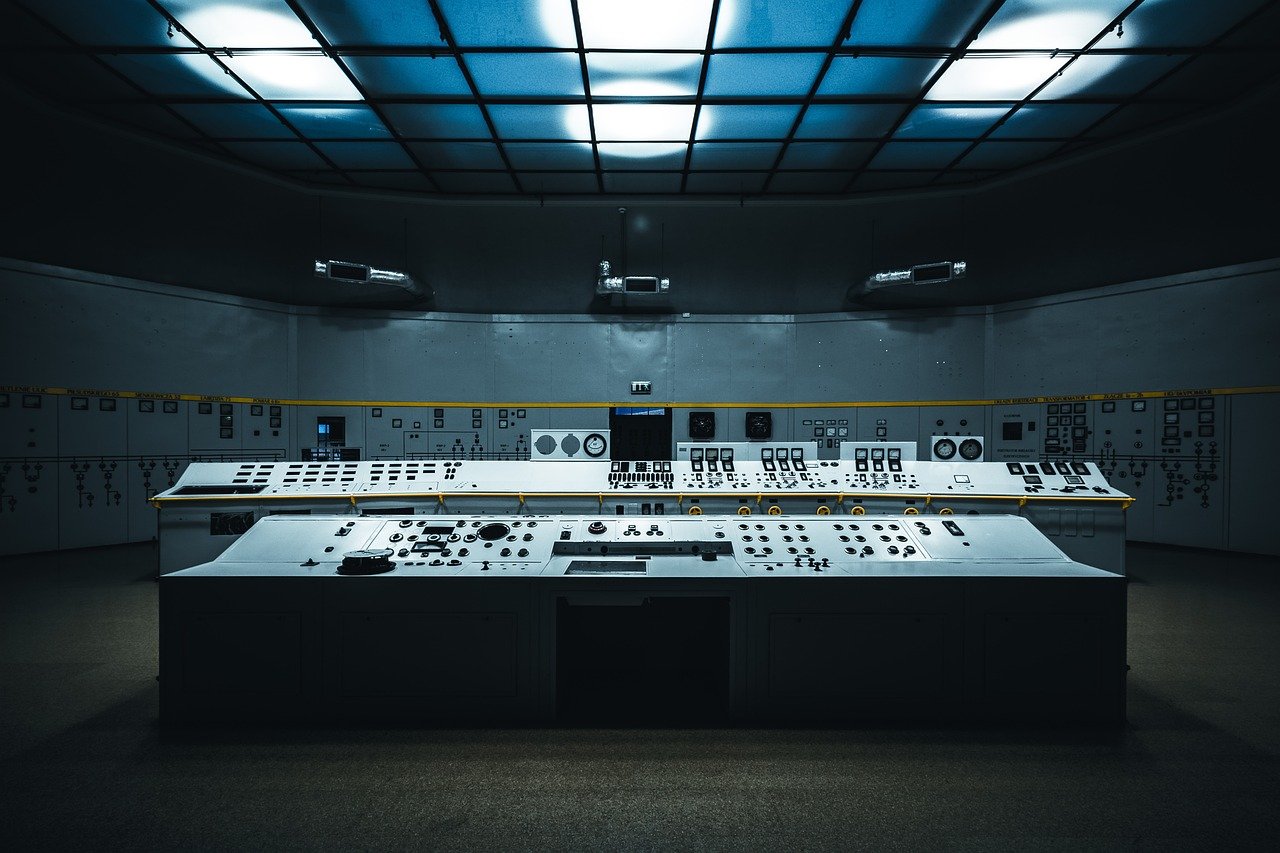Ruang kontrol merupakan pusat kendali dari setiap organisasi, tempat berbagai operasi dan aktivitas dipantau dan dikelola. Namun, bagaimana Anda menciptakan ruang kontrol yang efisien? Mari kita bahas komponen-komponen penting dan pertimbangan desainnya.

Ruang Kontrol Fisik: Menciptakan Lingkungan Ideal
Pertama, Anda memerlukan ruang khusus untuk menampung peralatan dan personel ruang kontrol. Ruang ini harus mengakomodasi semua stasiun kerja, display, dan memastikan kenyamanan ergonomis bagi operator.
Stasiun Kerja Ruang Kontrol: Pusat Komando Operator
Setiap operator memerlukan stasiun kerja individual, dilengkapi dengan komputer atau konsol untuk mengakses aplikasi perangkat lunak yang relevan, alat pemantauan, dan sistem komunikasi.
Tampilan: Pusat Informasi
Layar beresolusi tinggi atau dinding video sangatlah penting. Layar tersebut menyajikan data waktu nyata, rekaman pengawasan, diagram proses, dan peringatan, yang memungkinkan operator memantau beberapa sumber secara bersamaan.
Konsol Ruang Kontrol: Antarmuka Interaktif
Konsol kontrol mengintegrasikan berbagai antarmuka kontrol dan peralatan, termasuk tombol, switches, kenop, dan layar sentuh. Hal ini memungkinkan operator berinteraksi dengan sistem dan peralatan secara lancar.
Sistem Komunikasi: Memastikan Konektivitas
Komunikasi yang efektif sangat penting. Sistem interkom, telepon, dan radio dua arah memfasilitasi komunikasi yang lancar antara operator dan dengan pemangku kepentingan eksternal.
Pemantauan dan Pengawasan: Mata Memantau Segala Hal
Kamera pengintai, sensor, dan peralatan pemantauan mengumpulkan data dan menyediakan informasi waktu nyata tentang proses, keamanan, atau kondisi lingkungan, yang memastikan pengawasan yang komprehensif.
Infrastruktur Jaringan: Tulang Punggung Digital
Infrastruktur jaringan yang kuat dan aman menghubungkan semua komponen ruang kontrol. Infrastruktur ini mendukung pembagian data, akses jarak jauh, dan integrasi dengan sistem lain, sehingga memastikan operasi tanpa gangguan.
Cadangan Daya dan Redundansi: Tetap Beroperasi
Sistem catu daya tak terputus (UPS) atau generator cadangan sangat penting untuk menjaga operasi terus-menerus, terutama selama pemadaman listrik atau keadaan darurat. Sistem redundan meminimalkan waktu henti.
Ruang Kontrol Lingkungan: Kenyamanan dan Produktivitas
Kontrol suhu, ventilasi, dan tindakan pengurangan kebisingan sangat penting untuk menciptakan lingkungan kerja yang nyaman dan produktif bagi operator.
Pertimbangan Ergonomis: Kesejahteraan Operator
Desain furnitur ruang kontrol harus mengutamakan ergonomi. Kursi, meja, dan layar yang dapat disesuaikan mendukung kenyamanan operator, mencegah kelelahan atau cedera selama shift panjang.
Menyesuaikan dengan Kebutuhan Spesifik
Ingat, persyaratan khusus untuk pengaturan ruang kontrol bervariasi berdasarkan industri, organisasi, atau sistem yang dipantau. Konsultasi dengan para ahli dan analisis kebutuhan operasional sangat penting untuk merancang ruang kontrol yang efektif.
Menciptakan ruang kontrol yang efisien memerlukan perencanaan yang cermat dan pertimbangan berbagai elemen. Dengan berfokus pada komponen-komponen penting ini, Anda dapat memastikan bahwa ruang kontrol Anda dilengkapi dengan baik untuk menangani tuntutan organisasi Anda.







